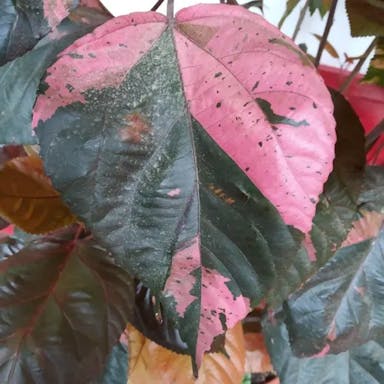The botanical name of the plant is Crinodendron hookerianum. It grows naturally in Chile. The plant has nice dark green leaves. It produces pretty hanging red flowers. This plant often grows into a small tree. It can reach 10 meters tall. It is easy to grow in moist and well-drained soil. It likes partial shade or full sunlight. It can live in places with mild winters. It does not make fruits to eat. It is used in gardens for decoration. The leaves and flowers look nice.
0
0












